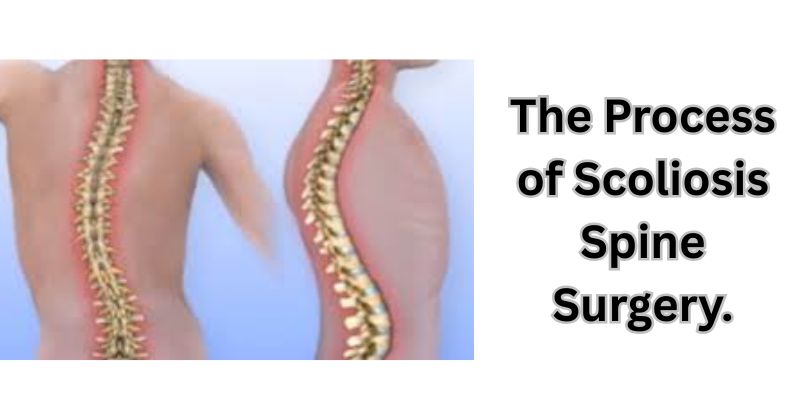Scoliosis is a medical condition characterized by an abnormal curvature of the spine. While some individuals with mild scoliosis may manage the condition with physical therapy or bracing, severe cases often require surgery to correct the curvature and prevent further complications. Scoliosis spine surgery is a highly specialized procedure aimed at stabilizing the spine, alleviating pain, and improving quality of life. This comprehensive guide will walk you through the scoliosis spine surgery process step-by-step, from diagnosis to recovery, and will also touch on the Scoliosis spine surgery cost in Arabia, making this life-changing procedure accessible for many.
What Is Scoliosis Spine Surgery?
Scoliosis spine surgery is a procedure designed to correct the curvature of the spine caused by scoliosis. The most common surgical technique used is spinal fusion, where the surgeon joins two or more vertebrae together using rods, screws, and bone grafts. This procedure helps stabilize the spine and prevent the curve from worsening.
The need for scoliosis spine surgery arises when the curvature becomes severe (usually over 40-50 degrees) or progresses quickly. It is also recommended when pain and functional limitations significantly affect the patient’s quality of life. Surgery is often the last resort when non-surgical treatments such as bracing or physical therapy fail to manage the condition effectively.
Step 1: Pre-Surgery Consultation and Evaluation
Before undergoing scoliosis spine surgery, patients undergo a comprehensive evaluation by a spinal surgeon. This includes a physical examination, a review of the patient’s medical history, and diagnostic tests such as X-rays, CT scans, or MRI scans to assess the severity of the curvature and its impact on the spine and surrounding organs.
During the consultation, the surgeon will discuss the specifics of the surgery, including the type of procedure most suitable for the patient’s condition. Patients will also be informed about the potential risks, benefits, and expected outcomes of the surgery.
Additionally, a pre-operative assessment may be required to ensure that the patient is in good overall health and capable of undergoing surgery. This may include blood tests, an electrocardiogram (EKG), and a chest X-ray.
Step 2: Preparing for Surgery
Once the decision for scoliosis spine surgery is made, preparations begin. The patient will be given specific instructions regarding diet, medication, and lifestyle adjustments leading up to the surgery. It is important to stop taking certain medications, especially blood thinners, several days before the surgery to reduce the risk of bleeding.
Patients will also be instructed to refrain from eating or drinking after midnight before the surgery, as is common with most surgical procedures. It is also advisable to arrange for someone to accompany the patient to and from the hospital, as well as to help during the initial days of recovery.
Step 3: The Surgery – What Happens During the Procedure?
Scoliosis spine surgery typically takes several hours, depending on the complexity of the case. The procedure is performed under general anesthesia, ensuring that the patient remains unconscious and pain-free throughout the surgery.
The surgical process involves the following steps:
1. Incision and Exposure of the Spine
The surgeon will begin by making an incision in the back (posterior approach) or, in some cases, at the front (anterior approach) of the body to access the spine. The incision is made carefully to minimize muscle damage and scarring.
2. Realigning the Spine
Once the spine is exposed, the surgeon will assess the curvature and begin the process of straightening the spine. In spinal fusion surgery, the surgeon will reposition the vertebrae into a more natural alignment. The goal is to reduce the curvature as much as possible and restore proper posture.
3. Fusing the Vertebrae
To stabilize the spine and prevent the curve from returning, the surgeon will fuse the vertebrae together using metal rods, screws, and bone grafts. The bone grafts, which can be taken from the patient’s own body or from a donor, encourage the vertebrae to fuse into a solid block of bone. Over time, the vertebrae will fuse completely, eliminating movement at the fused sections of the spine.
4. Closing the Incision
Once the spine is properly aligned and the fusion process is complete, the surgeon will close the incision using sutures or staples. The patient will then be taken to the recovery room, where they will be monitored closely for any signs of complications.
Step 4: Post-Surgery Recovery
The recovery process following scoliosis spine surgery varies from person to person, but it generally involves several key phases:
1. Hospital Stay
After surgery, patients are typically monitored in the hospital for 3 to 7 days, depending on their progress and recovery. During this time, pain management will be provided to ensure the patient is as comfortable as possible. Patients will also begin physical therapy to help regain mobility and strengthen the muscles around the spine.
2. Pain Management
Managing pain after scoliosis spine surgery is an important part of the recovery process. Patients will receive medication to control pain, and as they progress, the dosage will gradually decrease. Physical therapy will also help alleviate discomfort by improving mobility and strength.
3. Physical Therapy and Rehabilitation
Physical therapy is crucial for the recovery of patients undergoing scoliosis spine surgery. Initially, therapy will focus on gentle stretching and strengthening exercises to improve flexibility and muscle strength. Patients are encouraged to start walking and gradually increase activity as they regain strength.
It is important for patients to follow the physical therapist’s instructions carefully to avoid stress on the healing spine. Full recovery may take several months, and some activities, such as heavy lifting, will need to be avoided for up to a year.
4. Follow-Up Appointments
After leaving the hospital, patients will have regular follow-up appointments with their surgeon to monitor the healing process and ensure the fusion is progressing as expected. X-rays may be taken periodically to track the progress of the fusion.
Step 5: Long-Term Recovery and Lifestyle Adjustments
Full recovery from scoliosis spine surgery can take anywhere from 6 months to a year. During this time, patients will continue to follow their doctor’s instructions regarding physical activity, posture, and lifestyle adjustments. It is important to avoid activities that could place stress on the spine or cause injury during the recovery phase.
Patients may also be advised to make ergonomic changes in their daily lives, such as adjusting their workstation or sleeping position, to support spinal health. Continued physical therapy may be recommended to maintain strength and flexibility.
Scoliosis Spine Surgery Cost in India
One of the most significant factors when considering scoliosis spine surgery is the cost of the procedure. While scoliosis spine surgery can be expensive in Western countries, India offers a more affordable solution without compromising on the quality of care.
The scoliosis spine surgery cost in India typically ranges from ₹2,00,000 to ₹6,00,000 (approximately $2,500 to $8,000), depending on factors like the complexity of the surgery, the type of procedure performed, and the medical facility. This is a significant reduction compared to the cost in countries such as the United States or the UK, where the procedure can cost upwards of $50,000.
Indian hospitals that specialize in orthopedic and spinal surgery are equipped with advanced technology and highly skilled surgeons who have years of experience performing scoliosis spine surgery. This makes India an attractive destination for medical tourism, offering world-class care at a fraction of the cost.
Conclusion
Scoliosis spine surgery is a highly effective procedure for correcting severe spinal curvature and improving the patient’s quality of life. From the pre-surgery consultation to the final stages of recovery, the process is designed to ensure the best possible outcome for the patient. While the recovery may take several months, most patients experience significant improvements in posture, pain relief, and overall mobility.
For those considering Scoliosis spine surgery cost in India makes it an accessible option. With affordable pricing and high-quality care, India has become a popular choice for individuals seeking treatment for scoliosis. If you or someone you know is dealing with severe scoliosis, consulting with a qualified surgeon can help determine if scoliosis spine surgery is the right option for you.
for more(click here)



